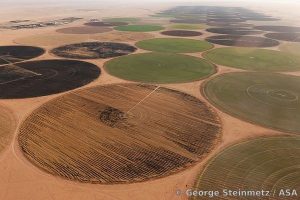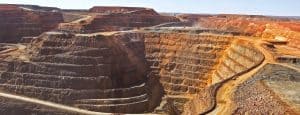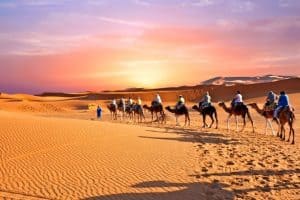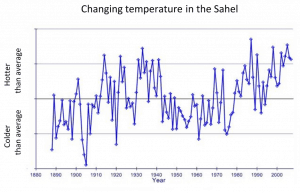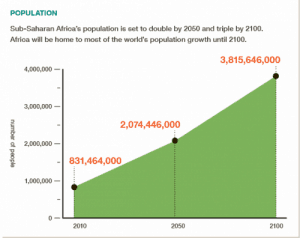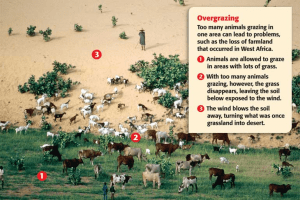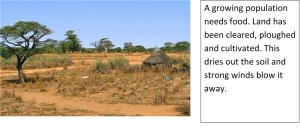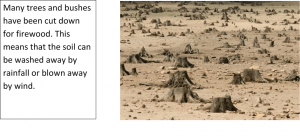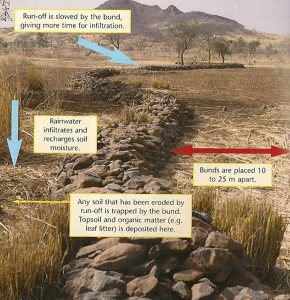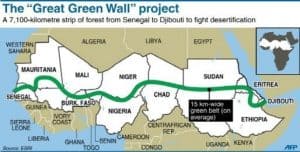CASE STUDY
The Sahara Desert in Africa is the largest desert in the world.
Opportunities in a hot desert
There are 4 main opportunities in a desert. They are seen in the pictures below.
- Solar power may provide electricity for millions. It can be generated using the heat form the sun. Mirrors focus the sun’s energy on a central reciever. This heats up molten salt. This heat store can create steam to turn a generator even at night when the sun has gone down.
- Farming can create jobs and grow food in the desert. The desert soils contain nutrients and using irrigation water from an ancient underground aquifer allows crops, such as wheat, to grow even in the middle of the desert.
- Mining for ores (such as gold, iron, manganese) or oil is currently big business. Many large mines operate in the Sahara Desert extracting resources from rocks underground.
- Tourism creates many jobs as visitors bring money to LICs, such as Mali, where adventurous explorers may visit Timbuktu.
| Minerals mined in Sahara Desert
Iron ore, copper ore and gold are mined in Mauritania. Iron ore is used to make steel. 50% of all Mauritanian exports are iron ore. This income is very important to this LIC ranked 142 out of 149 countries in terms of wealth.
|
Tourism in the Sahara Desert
10 million tourists visit Morocco every year. Morocco is the most visited country in Africa. Tourism creates 20% of the GDP (wealth) of Morocco. Tourism creates 750 000 jobs in Morocco.
|
Solar power in the Sahara Desert
The Sahara is the sunniest place on earth. Only 3% of the time is cloudy. The largest solar power station in the world is in Morocco. It generates renewable electricity for 1 million homes. In the future, the UKs electricity could come from even larger solar power stations in southern Tunisia. |
Farming in the Sahara Desert
Currently Libya can only grow 25% of the food it needs. Irrigation of desert soils could increase food production in Libya. Irrigation uses water from underground – stored in an aquifer. When all the water has gone – it’s gone. No rain falls to replace the water is pumped out |
Challenges in a hot desert
Developing a hot desert is not straight forward. The environment poses many challenges.
- HIGH TEMPERATURE – The highest temperature ever recorded on Earth was in the Sahara Desert in Libya where the temperature reached 57.80C
- LACK OF RAINFALL – The 3rd driest place on Earth is in the Sahara Desert in Libya with on average of 0.8mm of rain per year.
- INACCESSIBILITY – The Tenere region of the Sahara Desert – between Niger and Chad – is the least densely populated in Africa with 0.02 people per km2 or each person has 47km2 of land.
Desertification
Desertification is when fertile land is turned into desert.
Causes
Rainfall is declining in the Sahel – a region of sub-Saharan Africa, south of the Sahara desert.
Temperatures are increasing across the Sahel as a result of global warming.
The population of Africa is rising fast.
A rising population means more animals are kept for food. This means that all the vegetation is eaten and the soil dries up and is blown away. This is called over-grazing.
Over cultivation of the land for crops dries out the soil.
Deforestation for firewood removed the protective cover of trees. The soil dries up and is washed or blown away.
Reducing the risk of desertification
Building stone walls, called bunds, will reduce surface runoff by rain. This means more water soaks into the ground for use by crops.
Planting trees will reduce the spread of the desert. Tree branches protect the soil form erosion and the roots hold it together. Falling leaves add extra nutrients to the soil.
Appropriate technology is simple, cheap technology for LICs.  Toyola stoves are an example. They burn less wood as fuel so reducing the rate of deforestation.
Toyola stoves are an example. They burn less wood as fuel so reducing the rate of deforestation.

